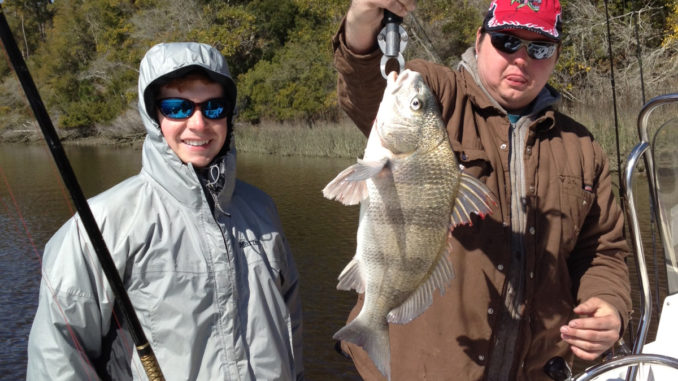
Cut shrimp and cut clams producing the most bites
For most of the winter, the black drum bite has rocked the inshore waters around Little River, and the last few weeks during the changing weather, it has not slowed it down one bit.
Captain Tom Cush of Calmwater Charters is on them and pulling in both big numbers and big fish.
“Black drum have been active and large. The last couple of trips, two of our fish were over 20 inches,” Cushman said. “The black drum bite has been as good as I have ever seen it.”
The weather continues to yo-yo between 70- and 30-degree days, and Cushman (843-997-5850) said water temperatures have dropped from nearly 60 down to the mid-50s over the past week. Additionally, the gusty winds keep churning the waters – but the drum seem to be oblivious to these changes in their environment.
“The fish haven’t cared one bit and the action has been great,” he said.
Of all of the inshore favorites, black drum are the least selective in their forage base. Cut shrimp and even clams are producing great catches for Cushman and his crew. He attaches his bait to either fish finder rigs or ¼-ounce jig heads.
To get them going, Cushman sweetens the pot around his fishing holes.
“Chumming with bits of shrimp helps fire up the bite during periods of poor action,” he said.
Docks and channels just off the ICW are producing the most bites, but the jetties and the deep bends behind Bird Island and in Dunn Sound are sure to produce success for these striped fishes.
As a bonus, Cushman reports red drum mixed in with the black drum, and some of his reds are in the 30-inch range. Both redfish and black drum have similar diets and will take shrimp and clams with little reservations. As the water begins to warm up, the reds should replace the black drum in these areas. However, continued cool weather should sustain these ideal conditions for the black drum in the Little River area. Nevertheless, the spring thaw should arrive at any time raising water temperatures to the seasonal averages and jolting the fish into their spring positions.



